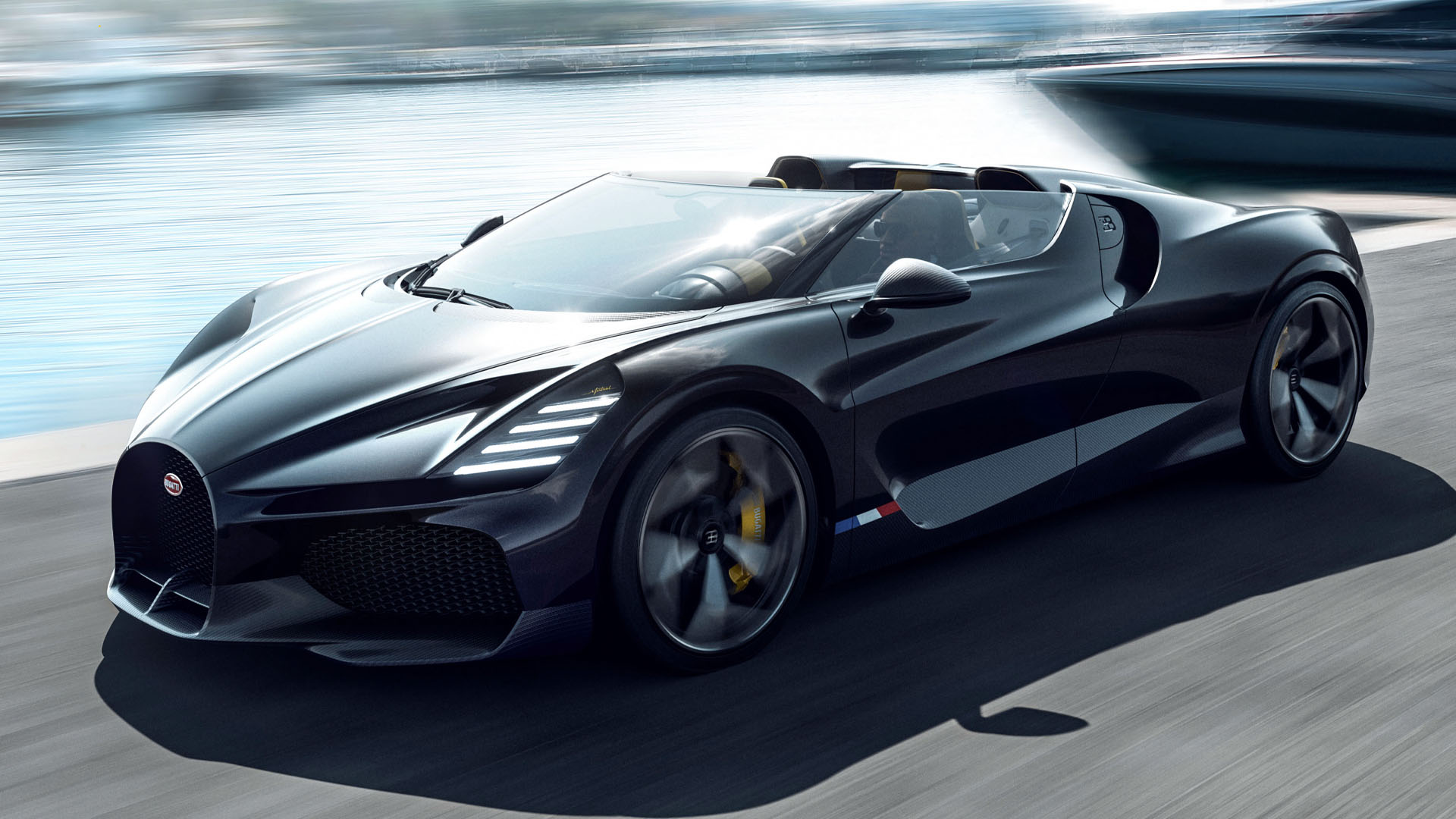

Automakers are starting to leverage new digital tools to help with the design, production, and bringing of products to market. The Hummer EV had an incredibly fast development cycle thanks to new technology such as virtual reality, while Ford is also using VR to accelerate vehicle modeling. It’s not just high-volume giants who see value in these tools, however. The Drive’s Editor-in-Chief Kyle Cheromcha sat down with Bugatti Design Director Achim Anscheidt, who explained the importance of VR in designing the brand’s latest hypercar, the $5,000,000 W16 Mistral roadster.
Anscheidt originally penned the Chiron, so he knows a thing or two about designing cars. He says the use of VR is a game-changer when it comes to the iterative design process of an automobile. It enabled the development of the Mistral in just nine months.
“We are so VR-based now,” he told The Drive. “I also like clay and my hands-on, but our virtual glasses these days are so good that we’re getting very close to the final product.”

Anscheidt’s team does still build physical mockups, but ensuring a car is correctly proportioned now takes much less time and resources. The designer explained that by using Blender, a very accessible CAD program, his team is able to get vital features and themes into shape without putting in too much work or time. These models aren’t appropriate for developing any sort of tooling, but when viewed in VR they’re almost as good—if not just as good—as looking at a real clay model.
The design then moves to a more advanced CAD software called Alias, which is far more sophisticated than Blender. This is when actual surfaces and precise measurements start getting involved. The final CAD model here can be used to develop tools for production. These models are also still viewable in VR, though, and any necessary minor tweaks can be viewed in full scale. No clay, no foam, just quick development.
“I would probably say now we save 40 percent of the time compared to 15 years ago and 20 percent from five years ago,” said Anscheidt.
When the development cycle of a car is measured in months, percentages like that add up big time. Interestingly enough, tools similar to the ones Ansheidt’s team uses are available to the general public as well. Want to put a car in your driveway for the fun of it? It’s not that hard using augmented reality, though it’s far more useful for a major OEM. It brings down the cost, risk, and development time.
VR nowadays is a no-brainer to an automaker. Soon, we’ll see who is really embracing it, and who gets left in the past. Bugatti, for one, seems to be taking full advantage.
Got a tip or question for the author? You can reach them here: peter@thedrive.com